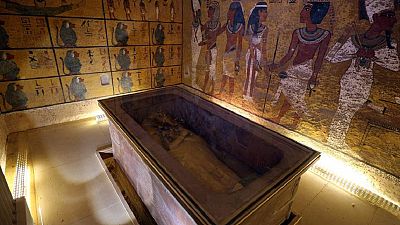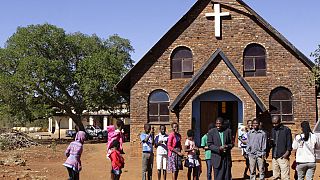Egypt
A century after the tomb of Tutankhamun was discovered, revealing the mummified boy-king buried more than 3,000 years ago, it has re-opened, brighter and safer thanks to painstaking work to repair damage caused by dust, damp and visitors.
I can’t wait to return to Egypt! https://t.co/Q9jCadFfFZ
— Gayle Trotter (@gayletrotter) February 1, 2019
The intricate frescoes on the walls and ceiling were also restored to the pristine state they were in when British archaeologist Howard Carter first entered the tomb in 1922.
In a process that took 10 years and was delayed by political upheaval in 2011 when protests forced Hosni Mubarak from power, wooden flooring, lighting and ramps inside the tomb were all replaced: and that meant Tutankhamun himself had to be moved.
The tomb of Tutankhamun in Egypt has been restored. New platform installations will restrict physical access of visitors.#tomb #tutankhamun #tutankamon #egypt #restoration #nineyearproject pic.twitter.com/7ZclAdBb6A
— The Emenent (@TEmenent) February 1, 2019
“It is an incredibly precious object, so it was a very stressful time to safely move the mummy,” said Neville Agnew, communications director of the Los Angeles-based Getty Conservation Institute, which led the work.
“It was terrifying,” he said of the operation to lift the mummy and its 250 kg (550-pound) case and carry it from the tomb by hand.
“Twelve men, chanting and carrying it up the ramp. I said: if one slips, it will slide and will kill somebody. They said: ‘Don’t worry’.”
Tourists visit the tomb of Egypt's legendary Pharaoh Tutankhamun as international experts reveal the results of a plan to preserve the site https://t.co/2VeHIoNbIA pic.twitter.com/jjQ2eJqm8i
— AFP news agency (@AFP) January 31, 2019
The ancient site in the Valley of the Kings had been renovated several times before, but perhaps never with this rigour.
Conservationists, architects, environmental specialists and scientists began with nearly five years of analysis that found environmental impact as well as visitor damage including graffiti, scratches and lost items.
“The water vapour produced by visitors’ breathing affected everything in the tomb,” said Hussein Shaboury, an arts professor at Alexandria University, adding that it had also been hard to breathe there.
“We had to change this and create a method by which fresh air enters the tomb, and air is circulated in a way where all the air in the tomb is changed in 30 minutes.”
Tourists visit the tomb of Egypt's legendary Pharaoh Tutankhamun as international experts reveal the results of a plan to preserve the site https://t.co/2VeHIoNbIA pic.twitter.com/jjQ2eJqm8i
— AFP news agency (@AFP) January 31, 2019
#Trending: The newly revamped tomb of #Tutankhamen, better known as King Tut, has finally been revealed to the public. #KingTut #KingsTomb #Egypt #Viral #GoneViral #MustWatch — Check out other trending vids here: https://t.co/AArIL3zont pic.twitter.com/UiiegRnGrA
— CBS4 Miami (@CBSMiami) January 31, 2019
REUTERS














01:57
Egyptian,Turkish Foreign ministers urge de-escalation in the Middle East
02:37
Charity: More than 10 million Sudanese children have been in warzone
02:20
Heart surgeon turned comedian, Egypt's Bassem Youssef begins "The Middle Beast" tour
Go to video
EU plans to fast-track some financial aid to Egypt.
01:56
Italy's PM Giorgia Meloni praises her country's role in EU deal with Egypt
01:02
The EU announces $8 billion aid package for cash-strapped Egypt